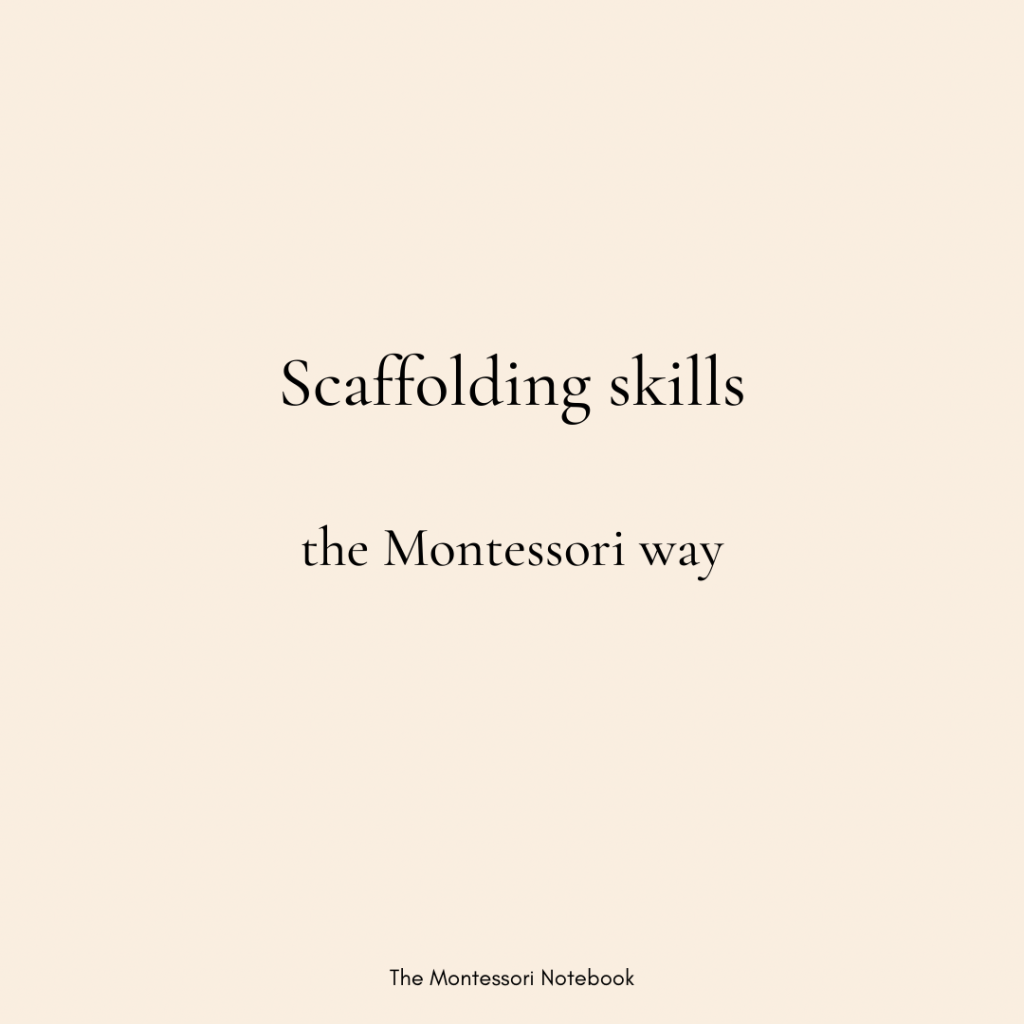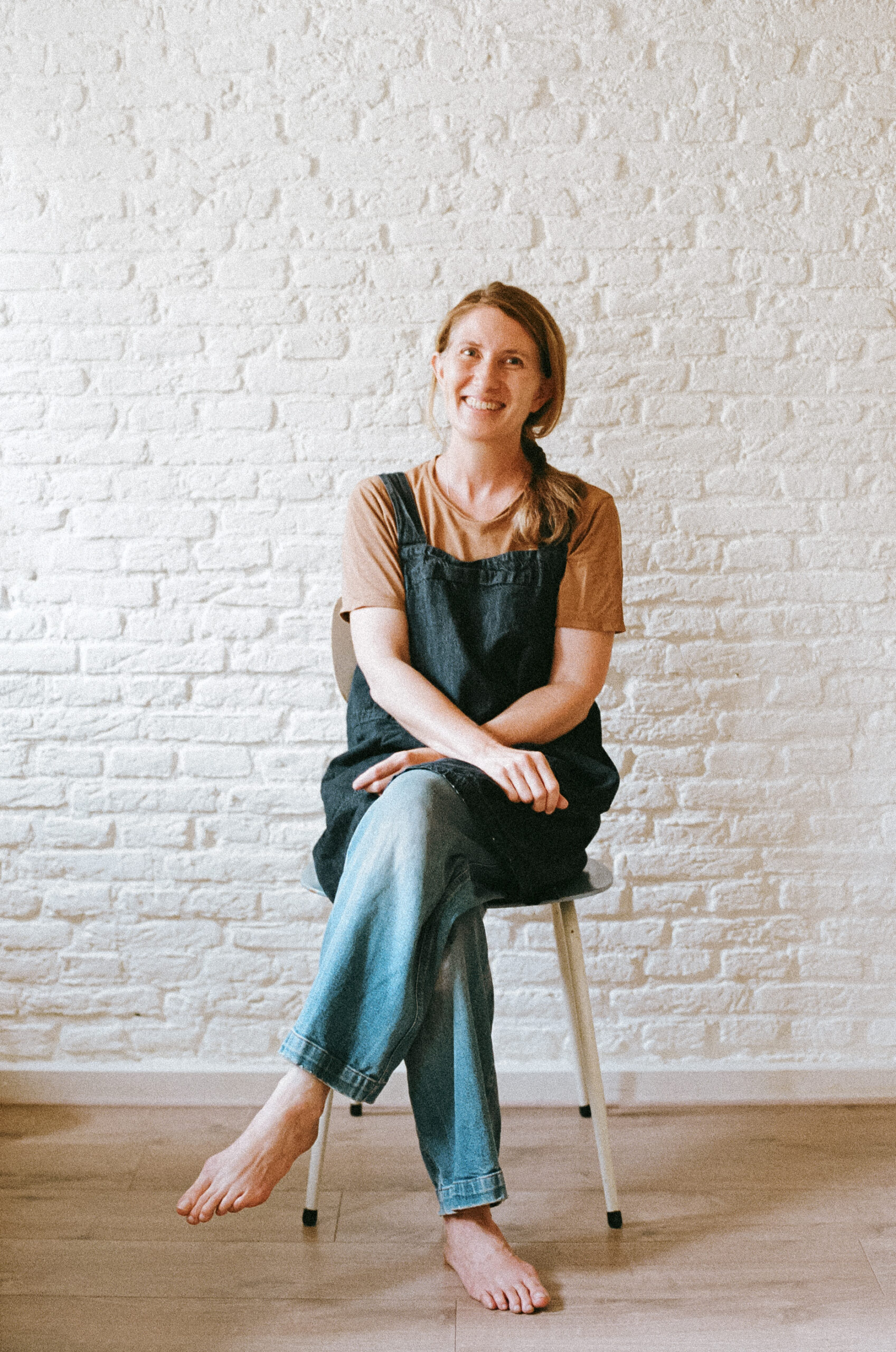What is scaffolding in Montessori?

I’m often asked, “What is scaffolding in Montessori?” Scaffolding put simply is building one skill on the next.
When I first entered a Montessori classroom, I saw the beautiful materials laid out on open shelves in a clear order. Once the children master a skill, they move onto the next, each building on the next. Some steps they’ll move through quickly, others might take some time and repetition to master. They move through them at their own pace and can ask help from another child or the teacher if needed.
When we have a solid foundation, we can add the next step, and the next, in a logical sequence. We don’t expect a child to master the skill in one day. They can learn one part and then add to it as they are ready. We support them at first; then once they build the skill we can gradually remove our support (just as we would remove the scaffolding from a building once complete).
We don’t learn to ride a bike in one day. Perhaps we learn to first sit on a balance bike or tricycle. Then we learn to push ourselves along with our feet. Then gradually we build speed and lift our feet off the ground. And all the little steps like learning to use pedals and balancing until we learn to ride a bike. We start on flat areas and build up to areas with hills and tight turns. Then we don’t go straight out onto the street to cycle, but start perhaps in a park or bike park, we learn the vocabulary and road safety with our adults as we walk, cycle and drive with them. Then we learn to ride alongside them, then in front of them, and eventually we learn all the traffic rules and are able to cycle by ourselves, first short distances in quieter streets, then longer distances and busier parts of our town/city.
The same scaffolding idea can apply to almost any skill our child is learning.
When my son was 18 months old and we attended our first Montessori playgroup class, I saw the other children able to put their own shoes on and off by themselves. I knew that Oliver must be capable too so I simply told him, “Here Oliver. Put on your shoes.” He looked blankly at me. I’d gone from helping him put on his shoes, to leaving him to do it completely by himself. Instead I needed to scaffold the skill of putting on his own shoes.
First, I loosened the velcro, opened the shoe wide, and showed him which foot went in. Then I held it open while he put in his foot and pushed down. Then I showed him one velcro strap, named it, then slowly pressed it closed. I invited him to do the others. And then the next shoe. Over time as he mastered the skills, I stepped back to allow him to do more and more for himself. To open his own shoe, work out which foot to put in, wiggle his foot in the shoe, do up the velcro, and repeat with the other shoe. And building up slowly to buying shoes with laces and learning to tie his own shoelaces too.
We break down each process into the smallest part for them to have success; we give them a chance to practice and master each step, each building on the next; and we allow time.
Try it with any skill your child is learning like:
- getting dressed
- making their own breakfast
- packing their bag for school
- making their own snack or lunch
- putting away clean clothes in their cupboard
- writing a report for school
- social skills like saying please and thank you
If the child is not successful, we can ask ourselves:
- are they ready?
- have they had enough practice?
- have we removed obstacles, eg, too many clothes in their drawer?
- have we shown them clearly enough?
It takes longer in the beginning for them to learn the steps, but how much time we save in the long run as the child can manage these skills for themselves.
And – more importantly – our children learn they are capable, they can care for themselves, others and their environment.

Simone Davies has more than 20 years’ experience as an AMI Montessori educator. Simone is the author of “The Montessori Toddler” and co-author of “The Montessori Baby” and “The Montessori Child” books, comprehensive guides to raising children in a Montessori way. She currently runs parent-child Montessori classes in Amsterdam at her school Jacaranda Tree Montessori. She also has a popular blog, instagram and podcast “The Montessori Notebook” and is mother to two young adults.